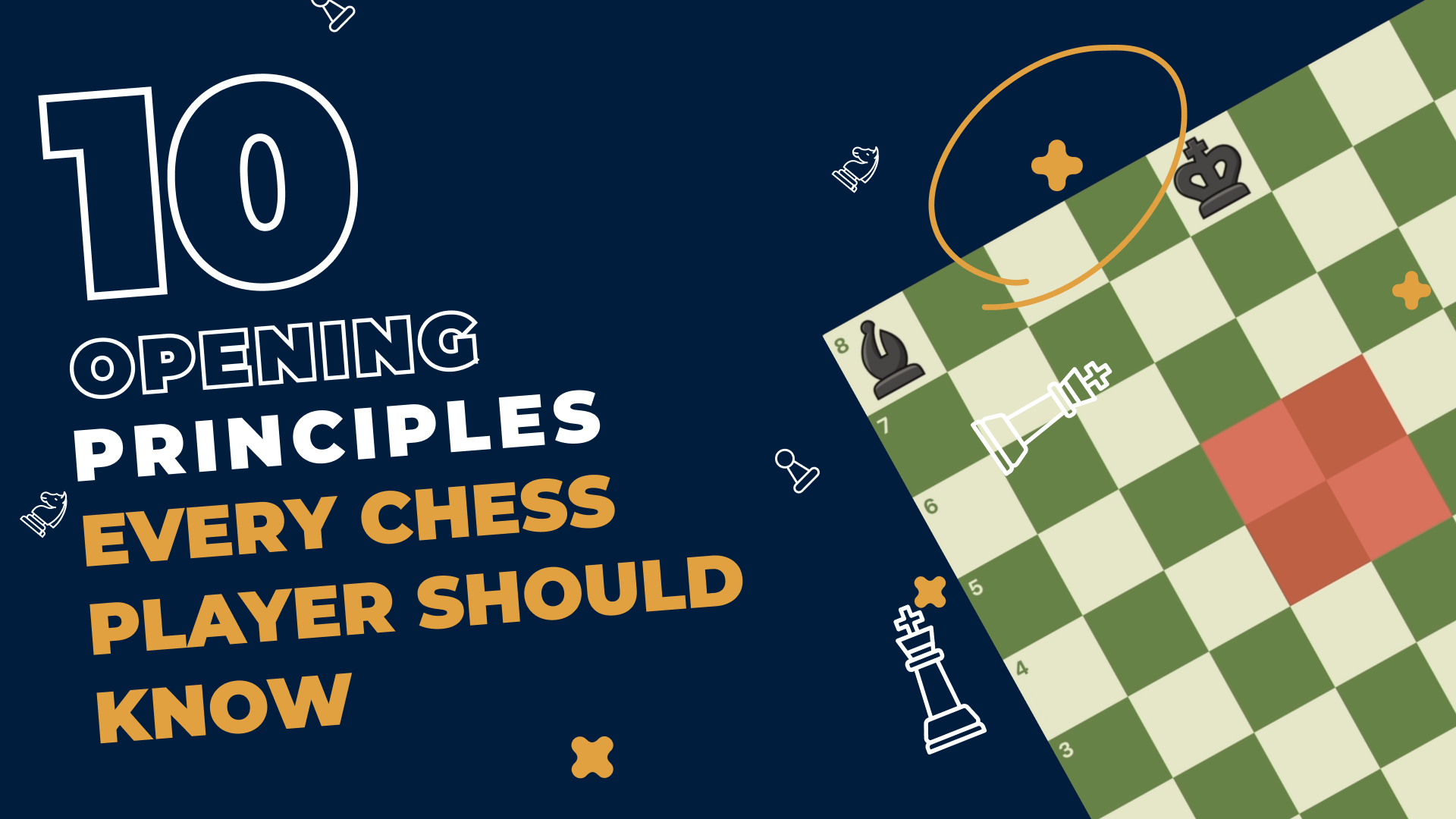The opening is the critical starting phase that sets the stage for the entire chess game. How you navigate the opening can profoundly impact your chances of success in the middlegame and endgame. While there is a vast theory of opening variations and lines to study, adhering to certain fundamental principles can give you a solid foundation regardless of the specific opening you choose. In this in-depth guide, we’ll explore ten essential opening principles that every chess player, from beginner to master, should deeply understand and apply.
Control the Center
The center squares (e4, d4, e5, d5) are the most vital real estate on the chessboard. Controlling this central territory with your pawns and pieces provides several crucial advantages. First, central control grants your pieces more mobility, flexibility, and broader influence over a larger area of the board. Second, it enables easier coordination and harmony between your forces. Third, it can restrict your opponent’s piece development and mobility. Aim to fight for central control from the very first moves by occupying central pawn squares and developing your pieces actively towards the center. Mastering this principle is foundational for building a strong opening position.
Rapid Piece Development
One of the primary goals in the opening stage is to swiftly mobilize your army of pieces from their initial squares. Undeveloped pieces sitting on their original squares lack any influence or control over the center and other key areas of the board. Moreover, they can act as potential weaknesses or targets for your opponent’s forces. Focus on rapidly developing your minor pieces (knights and bishops) to active squares that control vital central territories and create threats against your opponent’s position. Get your pieces into the game quickly and harmoniously to gain space and maximize their collective power.
Castling Priority
Among the first priorities in the opening should be safeguarding your king from the potential dangers lingering in the center. Castling is the vital king safety technique that tucks your most valuable piece away from the chaos of the center while also activating your potent rook pieces. Aim to castle as early as possible in most games, ideally before move 10. This timely castling achieves two objectives – keeping your king secure and bringing your rooks into the action to contribute to your developing initiative. It also clears key central files for your pieces to traverse. Once castled, you can fearlessly press ahead with your attack or defense.
Avoid Unnecessary Pawn Moves
In the opening phase, every pawn move must be purposeful and have sound reasoning behind it. Pawn moves are the most irreversible and committal actions you can take, so they must be methodical and part of an overarching strategy. Unnecessary, aimless pawn moves only serve to erode your pawn structure’s integrity, creating permanent weaknesses like isolated, doubled, or backward pawns. These pawn weaknesses often become targets for your opponent’s pieces to exploit later. Unless developing pawns with a clear plan or responding to opponent’s threats, avoid making superfluous, random pawn moves that create holes in your position.
Maintaining a Healthy Pawn Structure
The integrity and formation of your pawn structure is the backbone of your entire position. A cohesive, solid pawn structure provides several benefits – control of key central squares, avenues for your pieces to traverse, and stability. It shields your position from potential weaknesses that opponents could target. In the opening, strive to maintain a robust, healthy pawn structure without holes, weaknesses or targets. Create a strong stonewall that will be difficult for your opponent to penetrate or undermine. With a quality pawn formation, you enable harmonious coordination between your pieces in the later stages of the game.
Identifying and Punishing Opponent’s Weaknesses
While carefully developing your own forces in the opening, you must also remain alert and vigilant for any potential weaknesses or loose pieces in your opponent’s position. Isolated, overextended, or backward pawns often turn into targets. Poorly placed or overexposed pieces lacking proper protection or coordination can also be punished. Look to create threats and compound the pressure against any visible weaknesses you detect. Calculate ways to exploit these vulnerabilities, as they can quickly become the source of a decisive initiative or attack. Don’t allow your opponent to get too comfortable or develop their ideal formation without contesting it.
Understand Principles Over Blind Memorization
Many aspiring players spend countless hours memorizing hundreds of opening moves and variations in quest of an edge. While knowing theory is certainly valuable, blindly memorizing countless moves without understanding the underlying ideas and strategies is a hollow approach. Rather than rote memorization, strive to comprehend the pawn structures, piece maneuvers, strategic plans, and tactical motifs within each main opening line you study. Grasping the fundamental principles governing each system teaches you how to think during the opening, not just which moves to play by heart. This deeper understanding enables you to navigate new or unfamiliar positions with confidence when your preparation runs out.
Recognize Transpositions Between Opening Systems
Transpositions occur when different opening variations lead to very similar or identical positions on the board despite starting moves being different. The ability to recognize these transpositions allows you to apply your knowledge of one opening system to other related openings where the resulting positions are analogous. For example, certain lines in the Italian Game can transpose to particular variations of the Ruy Lopez opening. Cultivate the skill of recognizing these transpositions so you can handle the resulting positions with equal familiarity regardless of the precise opening path taken. This versatility enhances your strategic understanding.
Maintain Flexibility and Stay Open-Minded
While it’s wise to study opening theory and have a well-defined repertoire of openings you play regularly, you must not become overly dogmatic or inflexible with this knowledge. Always remain open-minded to adjusting your plans dynamically based on how your opponent responds and the specific nuances of each game. Rigidly sticking to memorized theory despite changing circumstances can easily make you become the dancer led by your opponent. Be willing to deviate from theory when the moment demands it, trusting your overall grasp of opening principles to steer you in the proper direction. Flexibility, calculation and adaptability should trump storing memorized moves in your memory banks.
Evaluate the Entire Position, Not Just Concrete Moves
Finally, one of the most crucial habits to develop from your first moves is the ability to evaluate and assess the entire position’s strengths, weaknesses and imbalances rather than just following a scripted set of opening moves. After the initial moves, take a step back from any memorized theory and strive to understand the overall landscape – the pawn structures, piece coordination, control of key squares and any existing imbalances. Where are the fault lines and potential weaknesses in each side’s position? How well developed and deployed are the armies? What are the strategic goals and plans for both sides? This holistic evaluation of all relevant positional traits must supersede any focus on just memorizing moves. By cultivating this practice from your first moves, you train yourself in superior positioning judgment and strategic calculation.
By diligently internalizing and applying these ten vital opening principles, you create a robust foundation for your entire game. The opening is just the starting point, but it’s critical to get it right by adhering to these fundamental concepts that grandmasters respect. This deep understanding of planning, control, development, structure, and strategic reasoning will pay dividends into the middlegame and endgame. While you will still need to study specific opening theory, adhering to these guidelines ensures you always follow principled chess and avoid incoherent or flawed positioning right from the start. Make these principles core tenets of your play, and you’ll be on the path toward mastering the opening phase of the royal game.

